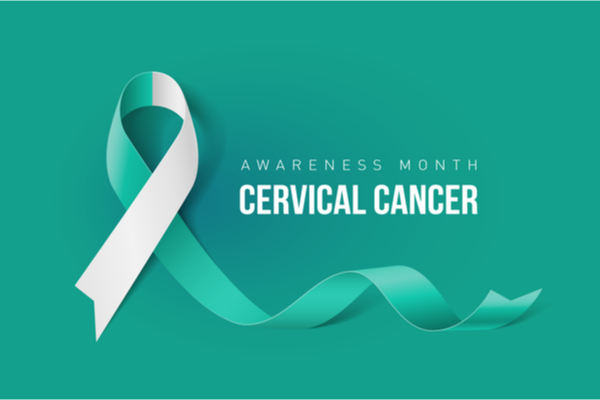If you – or anyone in your circle – were among the many who put off routine health screenings during the pandemic and still just haven’t gotten back on track, now is the time for that checkup. And, since January is Cervical Health Awareness Month, it’s a good time to check in with your health care provider to see if you’re due for a cervical cancer screening or Pap test.
Lately, there’s been a lot of talk about “self-care”. And while a bubble bath, massage or meditation is important, your health care also falls under that umbrella of taking care of yourself, physically, mentally and emotionally.
That brings us to Cervical Health Awareness Month. Here are some Important Facts and What You Can Do, from the medical professionals at Planned Parenthood:
Know the Facts
- Cervical cancer is one of the most preventable cancers. As many as 93% of cervical cancer cases could be avoided by screening and an HPV, or human papillomavirus, vaccination. With early detection, the five-year survival rate for cervical cancer is 92%.
- Anyone with a cervix — the tissue that connects the uterus to the vagina — can get cervical cancer, regardless of your gender identity.
- Access to regular Pap tests — the screening that detects abnormal cells that could turn into cancer — and HPV tests (which have been shown to be more accurate than Pap tests alone) can help you stay healthy and safe. And that’s why screenings are so crucial — they’re a gamechanger for your future.
- Whether or not you’re due for screening depends on several factors — including your age, the type of screening used (HPV test, Pap test, or both), and your medical history. Check with your health care provider to see if it’s time for you to get screened.
- Thanks to the Affordable Care Act’s preventive health benefits, more people have access to cervical cancer screenings and other preventive care without copays or out-of-pocket expenses. Regardless of your health insurance status, affordable care is always available at Planned Parenthood health centers, where over 255,000 cervical cancer screenings are performed each year.
- Latinx and Black women suffer disproportionately from cervical cancer due to structural inequities in health care. It is essential to the health of communities of color all across the country that barriers to healthcare access are eliminated.
What About HPV and Cervical Cancer?
- Cervical cancer is caused by certain types of HPV, the most common sexually transmitted infection (STI). In most cases, HPV is harmless and goes away on its own — but high-risk HPV can lead to cervical cancer.
- There is no cure for HPV, but a vaccine is available that can help protect against several high-risk types of HPV.
What’s Next? It’s Your Turn. Take the First Steps:
1. Contact your personal health care provider (Planned Parenthood also offers these services) to see if you’re due for a checkup.
2. Current cervical screening guidelines:
- First Pap screening at age 21
- Pap screening every 3 years (if results are normal) for ages 21–29. Clinicians begin monitoring for HPV at 25.
- For ages 30–64, a combined Pap and HPV tests, and more frequent screenings for those at higher risk
3. Understand what the finding of a Pap test means and what the follow up recommendations can be:
- If you have abnormal cells in your Pap test, a colposcopy is recommended. This is where the cervix is examined and small biopsies are taken. If the abnormalities are minor, you may be advised to repeat the Pap test in a year.
- If the results show more advanced abnormalities, a LEEP procedure, where a larger biopsy removing all diseased tissue, is recommended.
4. Protect yourself:
- Use protection during sex. Condoms lower the risk of HPV transmission if they’re used correctly, every time you have sex. However, note that HPV can infect areas not covered by a condom.
- Communicate with your sexual partners about being safe and protecting yourselves. A person can be exposed to HPV during genital skin-to-skin contact just once with someone who has HPV.
- Get regular Pap tests. A Pap test can find abnormal cells in the cervix (caused by HPV) before the cells become cancer.
—
Photo Credit: Duda Vasilii / Shutterstock.com
